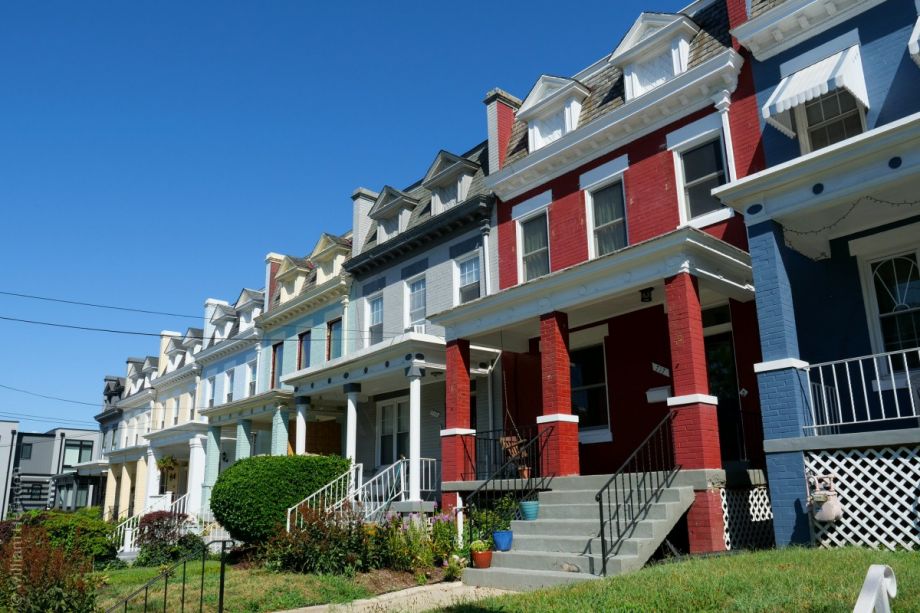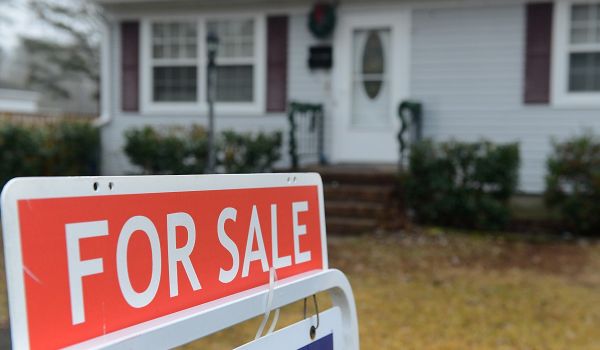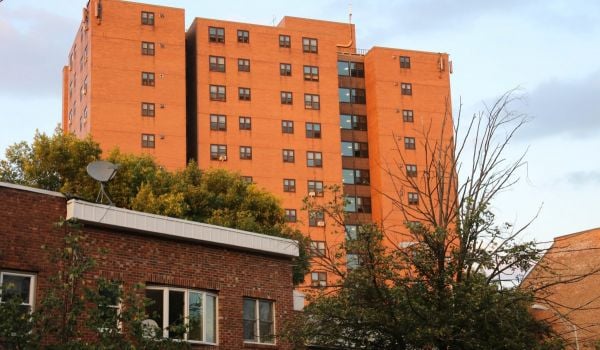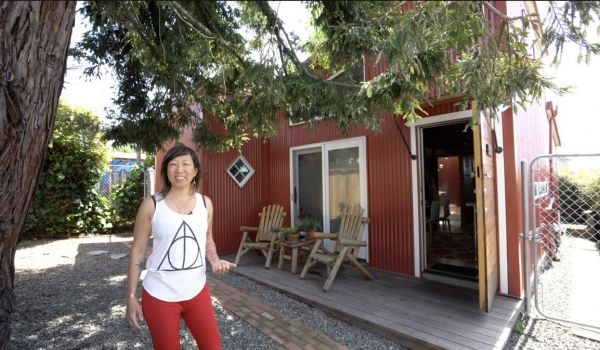Lawrence Foster lives with his daughter in a three-story rowhouse in Southeast Washington, D.C. The two of them mostly keep to the top two floors of the house, and for a long time, the basement has been unfinished and hardly used. A few years ago, Foster, an electrician, began hearing more about D.C. homeowners adding accessory dwelling units (ADUs) — unused living spaces converted by primary residents into standalone apartments — to their homes. Intrigued, Foster attended a workshop in the fall of 2018.
Last summer, with assistance from a small pilot program created by the United Planning Organization, a Community Action Agency, he decided to pull the trigger. He drew up a design for converting the basement and had an architect look it over. He did all new electrical work himself, and hired contractors to install a new bathroom, plumbing, and a sump pump, and to finish the floors, rebuild the steps, and open up access to the rear of the house. They’re now putting in drywall and painting, and Foster just bought a new washer and dryer. He has to replace a lead service pipe, and then get a certificate of occupancy before he can find a tenant to move in — “finishing touches,” he says. He started work four or five months ago, and expects the new unit to be ready in the next month or two.
“It hasn’t been difficult,” he says. “It’s just been a process.”
With the ADU D.C. program announced last August, UPO is trying to find ways to make ADUs cheaper and easier to build for moderate-income homeowners like Foster. The program is starting as a small pilot: just two handpicked homeowners are participating so far, according to Kay Pierson, director of the community reinvestment division at UPO. It was created in partnership with the Coalition for Smarter Growth, and supported with a $180,000 grant from Citi Community Development. (Note: Citi Community Development also provides funding to Next City.) A lot of UPO’s programs are focused on helping people in poverty, with services like emergency rental assistance, Pierson says. But the ADU D.C. program is part of a series of efforts aimed at “asset development” — helping build wealth in lower-income communities — she says. The organization went looking for homeowners who earned up to 80 percent of Area Median Income (AMI is $121,300 for a family of four in Washington), and who had good credit, steady employment history, and equity in their homes. And the partners are hoping that the pilot program demonstrates ways that the city and others can help moderate-income homeowners create more ADUs.
“We are giving them funding for their ADUs and we are helping them navigate the process with the city and with lenders and wherever else they need the help,” Pierson says. “We intend to provide ongoing support, so even after their ADUs are finished if they need help with property management, we’re there to do that.”
Building more accessory dwelling units has been held up by many cities as a tool to provide more low-cost housing in the face of housing shortages, while also providing additional equity for homeowners. San Francisco won a national planning award for its efforts to make ADUs easier to build in 2018. A partnership in Los Angeles is helping homeowners finance and build ADUs if they rent them to tenants with Housing Choice Vouchers for at least five years. In 2016, as part of an overhaul of its zoning code, Washington, D.C., streamlined the process for building ADUs as well.
The Coalition for Smarter Growth in Washington had been advocating for those kinds of rule changes for several years. The benefits just pile on top of one another, says Cheryl Cort, the Coalition’s policy director: ADUs can take advantage of partially developed and underused space, provide space for seniors to age in place or for family members with special needs, provide rental income for homeowners, and promote small-scale living, which has a smaller impact on the environment.
“And adding rental housing options can bring new types of housing to established neighborhoods that might have few rental options today, including high-priced neighborhoods close to the Metro or in-demand schools and other amenities,” Cort says. “It’s natural diversification of the housing stock, rather than just being uniform.”
Still, Cort says, it can be expensive to build a new unit, even when taking advantage of existing space. She says she’s talked to a lot of architects who are approached by homeowners to consult about adding an ADU, only to have the homeowners walk away when they hear the cost, which is typically around $150,000, according to Cort. (Other cost estimates for ADUs here.) As part of the ADU D.C. program, the Coalition is producing a manual for homeowners to help navigate the permitting process, and the partners are also working with the Department of Consumer and Regulatory Affairs about ways to make permitting easier and faster for accessory dwelling units. And they’re exploring how financing programs might be scaled up to provide financial help for more moderate-income homeowners.
Robert Burns, a senior vice president at Citi Community Development, says the goal of the work is, on the one hand, to help moderate-income homeowners produce new units of housing, and on the other, to explore how the new zoning rules might benefit more people lower down the income scale.
“Given the challenge we’re facing, not just here in D.C. but nationwide, it’s going to take more than one solution,” Burns says. “And at a regional level and a local level, we have to be willing to do a little experimentation.”
Last fall, D.C. Mayor Muriel Bowser announced a goal of producing 36,000 new homes in the District by 2025, with at least 12,000 of them being affordable to low-income residents. The city’s Housing Equity Report released at the same time has specific affordable-housing production targets for 11 different areas of the District. Those targets will help focus the city’s efforts, Cort says. And accessory dwelling units can be part of the mix of new housing that helps meet that goal, especially if the city can find ways to help moderate-income homeowners house lower-income tenants. The ADU D.C. program is meant to help show that tailored assistance and financing can produce more units.
“It’s a retail game,” Cort says. “We’ve got to be working individually with homeowners.”
UPDATE: This article has been updated with comment from Burns.
This article is part of Backyard, a newsletter exploring scalable solutions to make housing fairer, more affordable and more environmentally sustainable. Subscribe to our weekly Backyard newsletter.

Jared Brey is Next City's housing correspondent, based in Philadelphia. He is a former staff writer at Philadelphia magazine and PlanPhilly, and his work has appeared in Columbia Journalism Review, Landscape Architecture Magazine, U.S. News & World Report, Philadelphia Weekly, and other publications.
Follow Jared .(JavaScript must be enabled to view this email address)





_600_350_80_s_c1.jpg)












